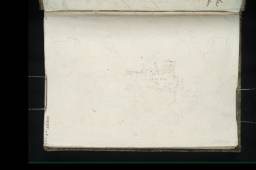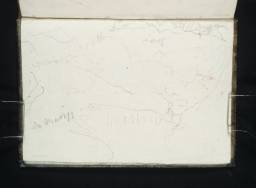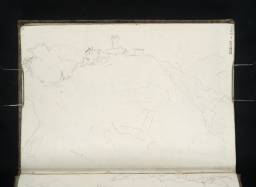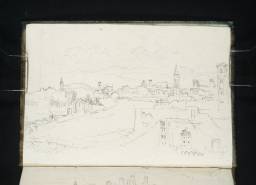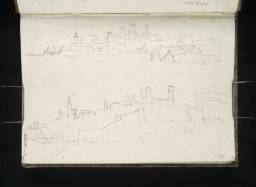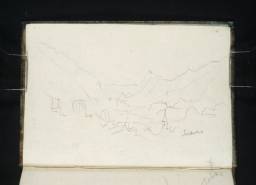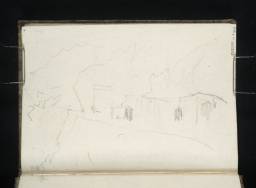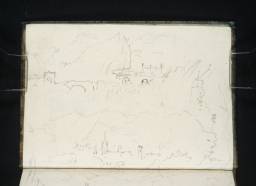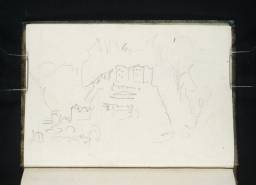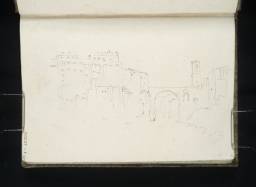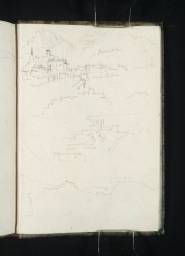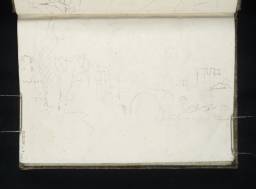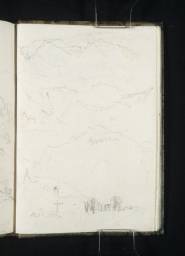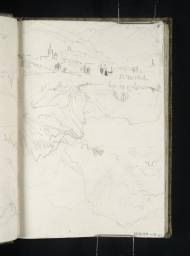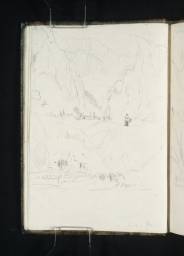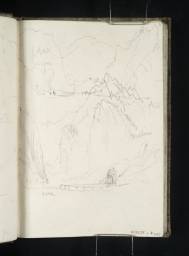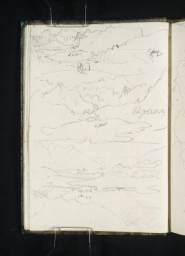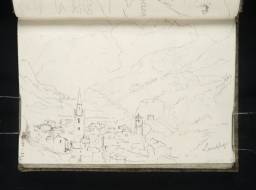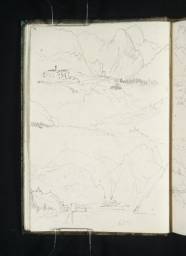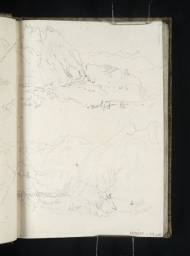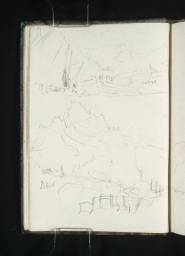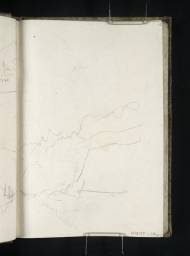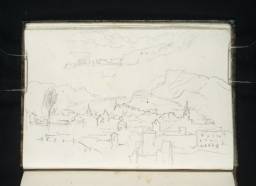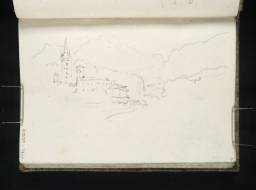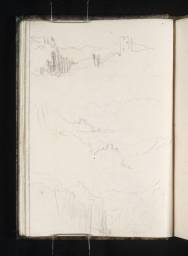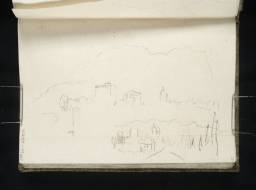Turner Bequest CCXCIV
Sketchbook, bound in parchment originally stained dark blue
90 leaves of a mixture of papers, comprising a medium weight white wove watermarked ‘B. Arnosso [?]’, and a lighter, white wove, variously watermarked ‘Fratelli’ and ‘Auondo’.
Approximate page size, 148 x 104 mm
Finberg recorded an inscription by Turner in pencil on the cover ‘Fort Bard Vale d’Aouste’ but this is no longer visible
Endorsed by the Executors of the Turner Bequest in ink ‘No.357 | 84 leaves of pencil sketches’ and signed by Henry Scott Trimmer ‘H S Trimmer’ and initialled by Charles Lock Eastlake ‘C.L.E’ and John Prescott Knight ‘J P K’ inside front cover (D41206)
90 leaves of a mixture of papers, comprising a medium weight white wove watermarked ‘B. Arnosso [?]’, and a lighter, white wove, variously watermarked ‘Fratelli’ and ‘Auondo’.
Approximate page size, 148 x 104 mm
Finberg recorded an inscription by Turner in pencil on the cover ‘Fort Bard Vale d’Aouste’ but this is no longer visible
Endorsed by the Executors of the Turner Bequest in ink ‘No.357 | 84 leaves of pencil sketches’ and signed by Henry Scott Trimmer ‘H S Trimmer’ and initialled by Charles Lock Eastlake ‘C.L.E’ and John Prescott Knight ‘J P K’ inside front cover (D41206)
Accepted by the nation as part of the Turner Bequest 1856
Exhibition history
References
This sketchbook was used in 1836 on a tour in the company of Hugh Andrew Johnstone Munro of Novar (see the Introduction: Sketchbooks used on Tour to the Alps, 1836).1 Turner travelled through France to Geneva and then crossed the Alps to the Val d’Aosta. The first leg of the journey is recorded in the Val d’Aosta sketchbook (Tate D29032–D29108; D29110–D29212; D41094–D41097; D41202; Turner Bequest CCXCIII). The sketches in the present book begin at Aosta and as it is composed of Italian paper, it was probably bought there.2
The itinerary is at first sight difficult to reconstruct from the order of contents, but the first sketches appear to be those found at the end of the book as presently numbered. In general the main sequence appears to start at folio 90 (D29377) with an exploration, possibly on foot, from Aosta up the valley to Villeneuve and the Château d’Argent, which seems to have particularly fascinated Turner, and St Pierre. Sketches of Aosta in the Val d’Aosta sketchbook suggest that Turner had already established a base there before travelling a little way back up the valley to begin sketching at Villeneuve and working his way back to Aosta. After this, a sequence running from folios 55 to 36 (D29314 to D29277) records a painstaking exploration, probably also on foot, down the Val d’Aosta to Chatillon, Montjovet, Verres, Fort Bard and Ivrea, returning to Aosta probably by coach on the evidence of a few very scrambled sketches on folios 29 verso to 35 verso (D29276 to D29265). Turner then travelled to Turin, again probably by coach, but there are no sketches of the city; the drawings only pick up again at Susa, and then follow in rather garbled order over Mont Cenis to Lanslebourg, the Val de la Maurienne and Chambéry. How Turner returned to England is not obviously recorded.
For Munro see Charles Sebag-Montefiore, ‘Munro of Novar, Hugh Andrew Johnstone (1797–1864)’, in Evelyn Joll, Martin Butlin and Luke Herrmann (eds.), The Oxford Companion to J.M.W. Turner, Oxford 2001, pp.194–5.
Technical notes
How to cite
David Hill, ‘Fort Bard sketchbook 1836’, sketchbook, June 2010, revised by David Blayney Brown, March 2013, in David Blayney Brown (ed.), J.M.W. Turner: Sketchbooks, Drawings and Watercolours, Tate Research Publication, February 2014, https://www


